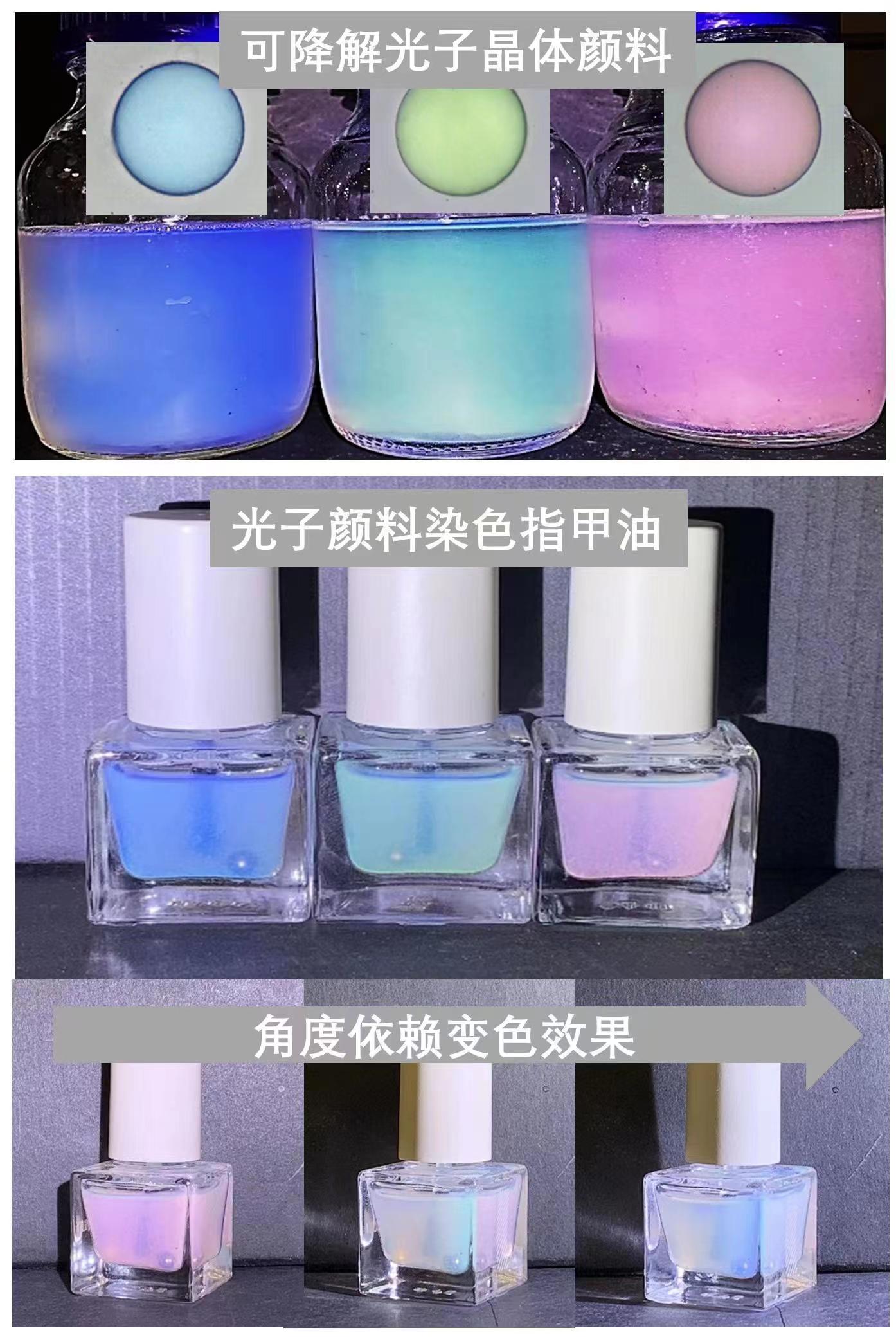Recently, the research group led by Prof. Song, Dongpo at Tianjin University has developed a new type of photonic crystal pigments, with vivid structural colors. Owing to its biosafety and degradability, the emerging material is expected to bringsignificant renovation to cosmetic industry.
Plastic mircrobeads, as filler, filmogen, thickener or suspending agent, are often used in our daily necessities, such as toothpaste, facial cleanser, body wash, sunscreen and other cosmetic products. Used make-up products containing plastic mircobeads are likely to be discharged through sewers, ending up in rivers and oceans. However, once these mircomaterials are swollen by marine creatures, they will probably be present in our daily dishes through human food chain. It is estimated that the amount of mircrobeads that a person may take from seafood per year is likely between 1800 to 11000. As severe as global climate change and ozone depletion, mircroplastic pollution, mainly from mircrobeads, are seen as a urgent environmental issue by the UN. So, the development of an innoxious and degradable alternatives has become a top priority for material scientists.

Based on the organized spontaneous emulsification mechanism, Song, Dongpo’s research group at Tianjin University has successfully developed new biocompatible and biodegradable photonic crystal pigments. This promising pigment can be made from bio-degradable polylactic acid as well as other polyester materials. And the photonic microbeads are ideal alternatives to nondegradable plastic microbeads, enabling exfoliate scrub, rub and removal of skin wrinkles. Biosafety is another advantage when compared to traditional micrbeads. Song’s team has confirmed that the photonic pigments are nontoxic to model aquatic organisms at different trophic levels such as Colibacilllus, Chlorella pyrenoidosa, Daphnia magna, and Zebrafish. The result indicate that the new material will not create any negative impact on our environment. They said that such materials have a great potential to be utilized as eco-friendly mircrobeads and dyes in cosmetics products as well as other industrial products.
Importantly, the internal nanostructure of this new photonic pigment is similar to an opal structure, producing structural colors close to those of opal stones, butterfly wings, and peacock feathers. Such color has long life time and shows iridescent color-changing properties, which is different from traditional pigments without such optical properties.
It’s hopeful that the new materials will replace non-degradable microbeads and artificial pigment in makeup and personal care products. For example, it can be used as the pigment in nail varnish and eye shadows, or as the UV-reflector in sunscreen. Professor Song said, this research project has been supported by National Key R&D Program of China and National Natural Science Foundation of China. In addition, such materials can be degraded into nontoxic lactic acid when discharged into water, causing no adverse effect on aquatic ecosystem. Upon widely use of the mateirals, environmental pollution caused by cosmetics will be largely reduced.
By: Chen Xu
Editor: Qin Mian






